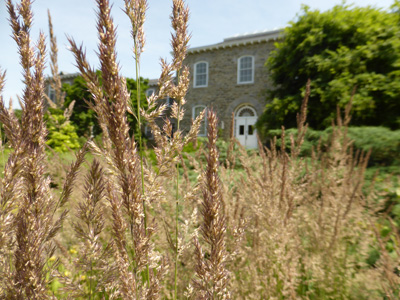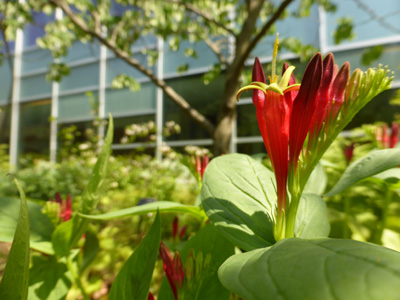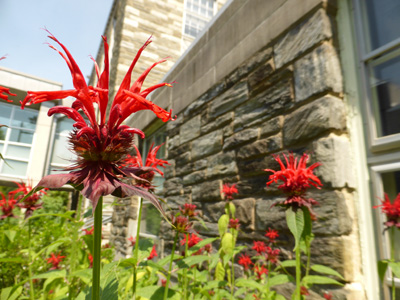Plants of the Week: June 23
Calamagrostis x acutiflora ‘Karl Foerster’
Sweeps of the soft, purple inflorescence of this ornamental hybrid grass provide a new and exciting texture to the John W. Nason Garden. As the purple blooms develop in late spring to early summer, a color and texture contrast is created between the blooms and the rich, true green stems. Interest continues throughout the summer as the seeds develop, bringing hints of gold and tan to the garden. It will thrive in full-sun to part-shade and in moist, fertile soils but will also do well in drier conditions. This winner of the Perennial Plant of the Year award in 2001 is sure to be a hit in any garden!
Photo credit: C. Morrissey
Spigelia marilandica
The brilliant, crimson-red flowers of Spigelia marilandica have opened in front of the Map House and in the Pollinator Garden to reveal an element of surprise—the inner, canary yellow inflorescence. Although native to the southeastern region of the United States, this shade-loving perennial is hardy here in the northeast. It is a delightful addition to a woodland garden, pairing well with trilliums and ferns. Conditions for this plant to thrive include moist, well-drained soil that is slightly acidic but rich in organic matter. Expect hummingbirds and butterflies alike during flowering, for they are frequent visitors of this nectar-rich plant!
Photo credit: C. Morrissey
Monarda didyma ‘Jacob Cline’
Reminiscent of a firecracker, the exuberant and vibrant red flowers of the ‘Jacob Cline’ beebalm in the Pollinator Garden are looking beautiful now against the stone wall of the Martin Building. You can’t go wrong with this variety of beebalm, as it has larger and longer-lasting blossoms and is mildew-resistant, early blooming, and taller than most other varieties. It’s a perfect choice in pollinator gardens, for it attracts bees, butterflies, and hummingbirds. With its tall stature and vibrant bloom, this perennial is perfect for adorning walls, fences, and back edges of planting beds that receive full to part sun.
Photo credit: C. Morrissey








No Comments